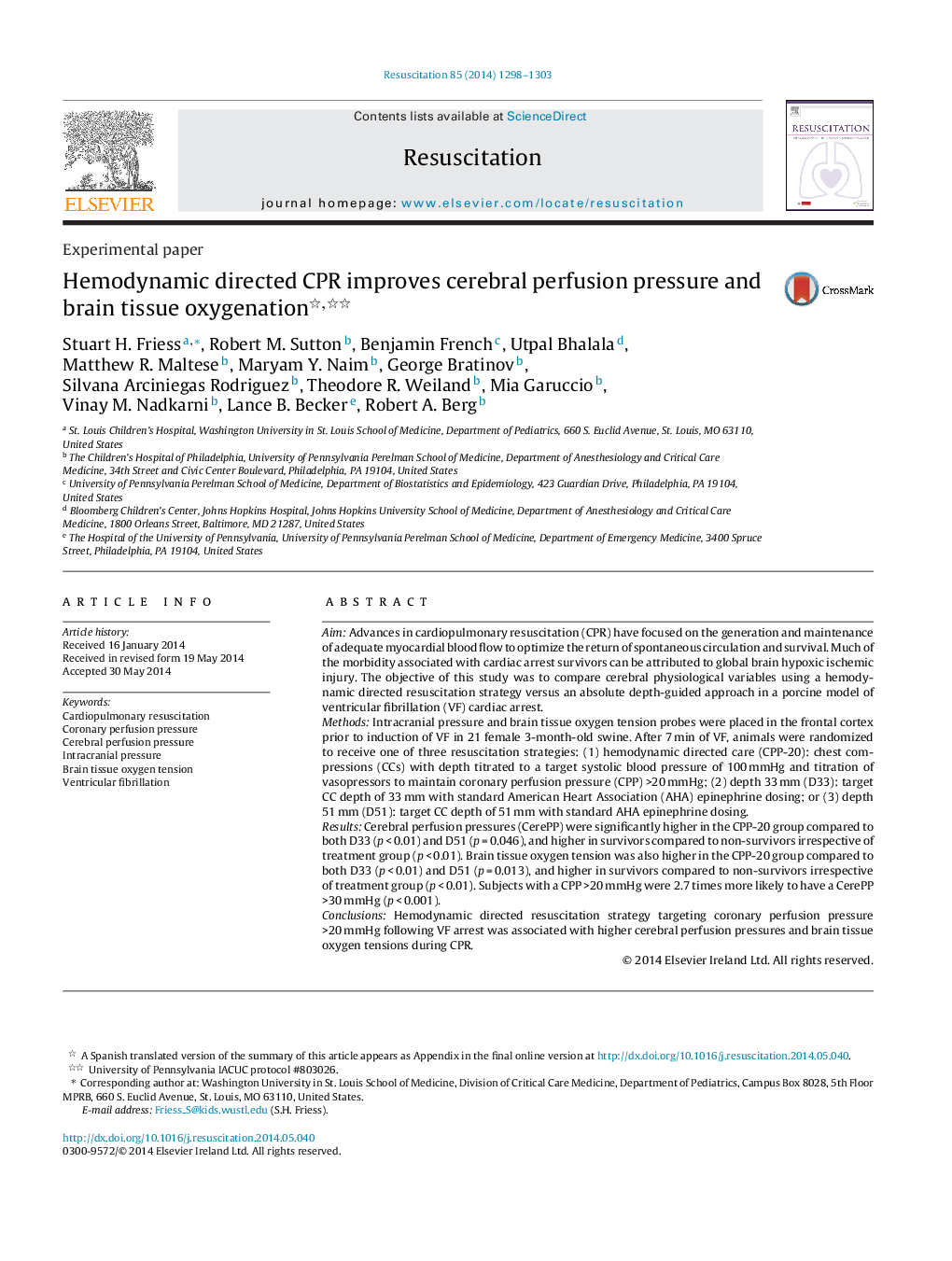| کد مقاله | کد نشریه | سال انتشار | مقاله انگلیسی | نسخه تمام متن |
|---|---|---|---|---|
| 5998280 | 1181438 | 2014 | 6 صفحه PDF | دانلود رایگان |

AimAdvances in cardiopulmonary resuscitation (CPR) have focused on the generation and maintenance of adequate myocardial blood flow to optimize the return of spontaneous circulation and survival. Much of the morbidity associated with cardiac arrest survivors can be attributed to global brain hypoxic ischemic injury. The objective of this study was to compare cerebral physiological variables using a hemodynamic directed resuscitation strategy versus an absolute depth-guided approach in a porcine model of ventricular fibrillation (VF) cardiac arrest.MethodsIntracranial pressure and brain tissue oxygen tension probes were placed in the frontal cortex prior to induction of VF in 21 female 3-month-old swine. After 7 min of VF, animals were randomized to receive one of three resuscitation strategies: (1) hemodynamic directed care (CPP-20): chest compressions (CCs) with depth titrated to a target systolic blood pressure of 100 mmHg and titration of vasopressors to maintain coronary perfusion pressure (CPP) >20 mmHg; (2) depth 33 mm (D33): target CC depth of 33 mm with standard American Heart Association (AHA) epinephrine dosing; or (3) depth 51 mm (D51): target CC depth of 51 mm with standard AHA epinephrine dosing.ResultsCerebral perfusion pressures (CerePP) were significantly higher in the CPP-20 group compared to both D33 (p < 0.01) and D51 (p = 0.046), and higher in survivors compared to non-survivors irrespective of treatment group (p < 0.01). Brain tissue oxygen tension was also higher in the CPP-20 group compared to both D33 (p < 0.01) and D51 (p = 0.013), and higher in survivors compared to non-survivors irrespective of treatment group (p < 0.01). Subjects with a CPP >20 mmHg were 2.7 times more likely to have a CerePP >30 mmHg (p < 0.001).ConclusionsHemodynamic directed resuscitation strategy targeting coronary perfusion pressure >20 mmHg following VF arrest was associated with higher cerebral perfusion pressures and brain tissue oxygen tensions during CPR.
Journal: Resuscitation - Volume 85, Issue 9, September 2014, Pages 1298-1303